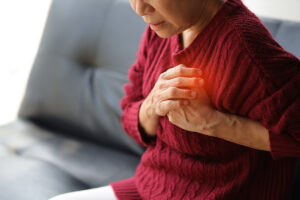Heart Conditions Stemming from Motor Vehicle Accidents, Falls, or Sports Injuries
 When we think of heart health and the situations that may compromise it, we tend to think of progressive or degenerative conditions, such as congestive heart failure, coronary artery disease, arrhythmia, and even hypertension (high blood pressure). We don’t often consider that the heart may be damaged by physical impact, either in a fall, a motor vehicle crash, a sports injury, or some other accident. The medical term for such an injury is a “myocardial contusion.”
When we think of heart health and the situations that may compromise it, we tend to think of progressive or degenerative conditions, such as congestive heart failure, coronary artery disease, arrhythmia, and even hypertension (high blood pressure). We don’t often consider that the heart may be damaged by physical impact, either in a fall, a motor vehicle crash, a sports injury, or some other accident. The medical term for such an injury is a “myocardial contusion.”
What Is a Myocardial Contusion?
Your heart is a muscle, just like your biceps or your quads. When you experience impact to any muscle, it’s common to have bruising—that’s what a contusion is. In addition to discoloration, you’ll commonly have tenderness or pain at the point of impact. When that pain is in the ribs or breastbone, it can present symptoms similar to a heart attack.
What Are the Symptoms of a Myocardial Contusion?
A myocardial contusion is essentially a bruise to your heart muscle, so you can expect tenderness or pain around your heart. It’s also typical to have some challenges with breathing, though that may be a consequence of pain or damage to your heart. A contusion may lead to dangerously low blood pressure and can cause an irregular heart rate. You can experience a pounding or racing heart.
How Is a Myocardial Contusion Diagnosed?
If you’ve had any type of physical trauma to your heart, doctors will look for the telltale signs of bruising:
- Tenderness in your chest
- Black-and-blue marks or scrapes on your chest
- Fluctuating blood pressure
- Difficulties breathing
Doctors will also use blood tests, X-rays, CT (computed tomography) scans, and echocardiograms as diagnostic tools.
The Treatment of a Myocardial Contusion
Medical professionals have a number of options for treating bruising of the heart caused by physical trauma:
- Medicines can be prescribed to regulate blood pressure or alleviate pain.
- A pacemaker may be installed to get the heart rate under control.
- If necessary, a chest tube may be installed, or other means may be used to drain blood from around the heart.

